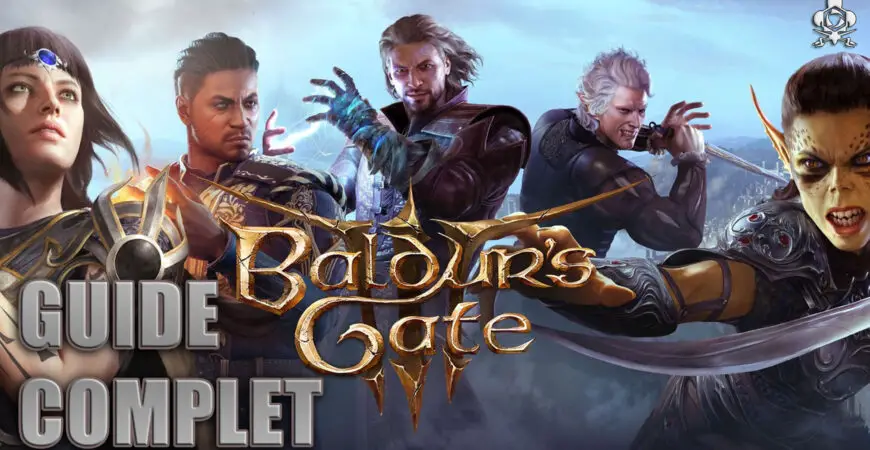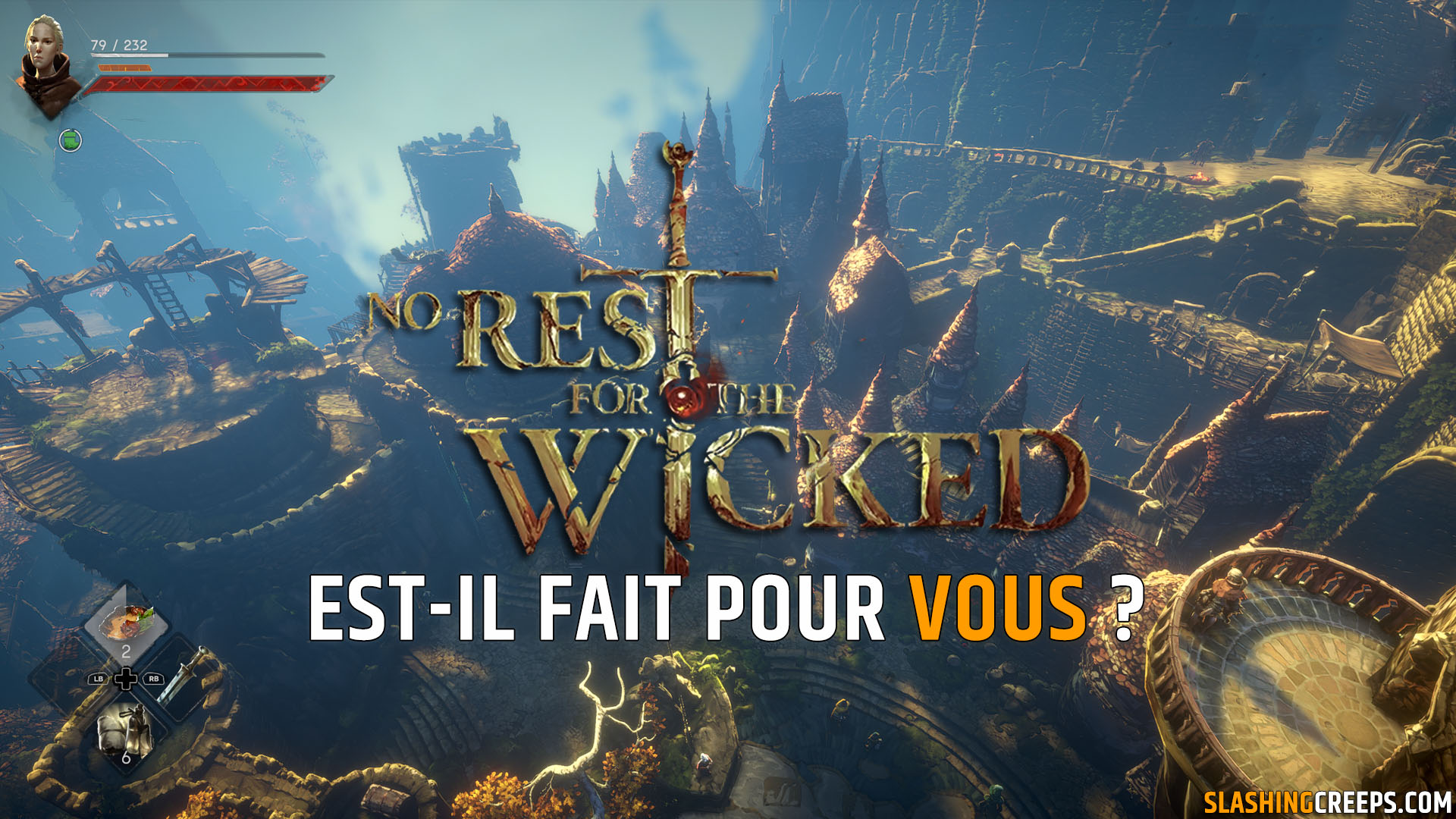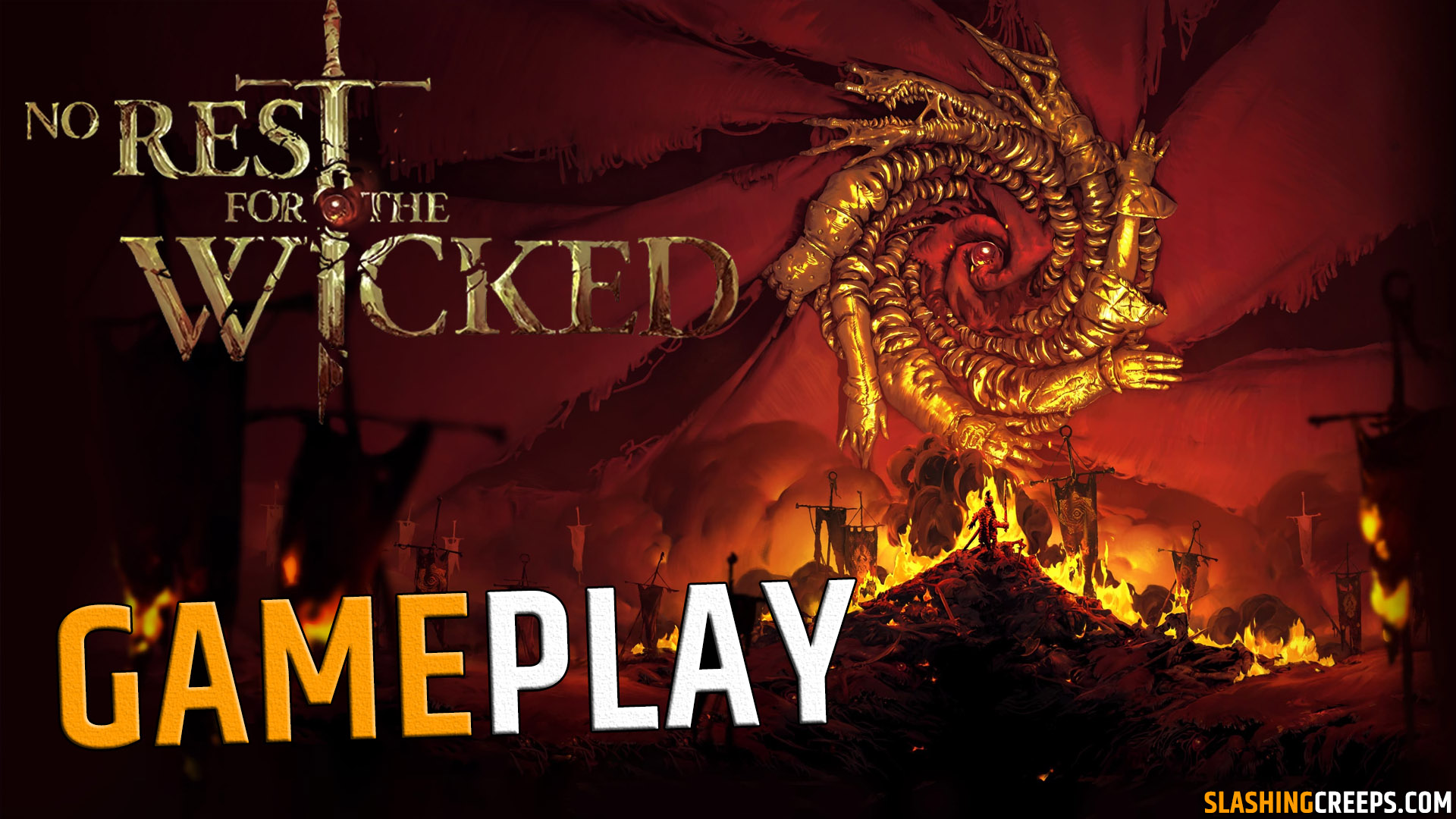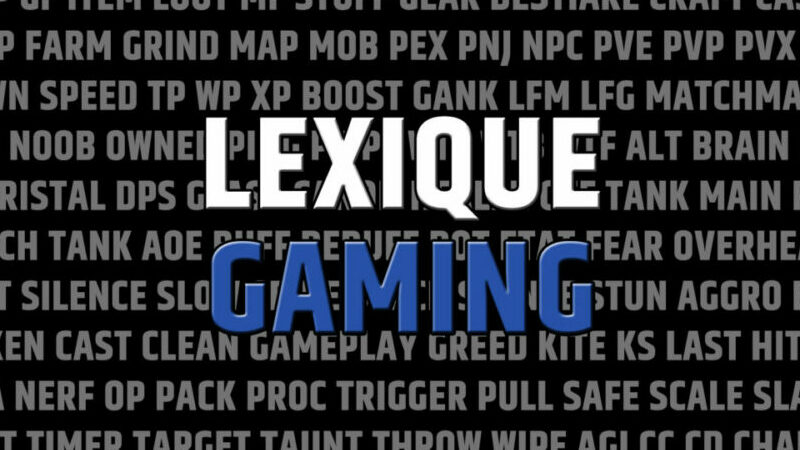
Complete guide to Baldur's Gate 3: info you need to know, spells and levels, gear, combat system, damage rolls, social and saving rolls
Good to know
In this section find all the various information to know!
- All the mechanics are based on the dice, when you see "1d6", it means 1 die of 6, that is to say a score between 1 and 6. "3d4" would mean 3 times a score between 1 and 4, that is to say a total of 3 and 12.
- A long rest completely recharges all of your abilities and life by sending you to camp, but you can take a short rest to heal yourself immediately and recover some of the abilities, avoiding going through the camp. Capacities are read "recovers after short / long rest". The two icons are at the top right next to the minimap.
- Masteries allow you to make a better roll with a weapon or a spell, but does not add damage. Please note that these are determined when the character is created (history, race, class, traits)
- There is no harm in using a weapon that you do not master
- Armor class gives your chance level to get hit
Spells and levels
You have two types of spells, spells that use spell slots linked to a level and magic tricks that do not cost a slot (they can be considered as level 0 spells).
Spell levels are different from your character's level. For each character level you will unlock spell slots. Take the example of a level 5 mage, he will have:
- 4 level 1 spell slots
- 2 level 2 spell slots
- 1 level 3 spell slot
You can therefore use these spaces to cast 1st, 2nd or 3rd level spells. Once you have used a spell, you lose a small square in the spell slots bar. To recharge these slots, you need to rest for a short or a long time (depending on your class). Magic tricks do not need to be recharged.
If necessary you will find here all spell slots unlocked by class and level of Baldur's Gate 3 (progress is automatic).
Combat system
Baldurs Gate uses a turn-based system, in which you can perform different actions. It is important to understand that all its actions are reset to 0 during your next turn on the character, if you do not use this action it will therefore be lost. These rules are taken from the Dungeons & Dragons role-playing game. Here are the different actions:
- move: you can cover a given distance represented by the yellow bar on each lap. It will be very interesting to be placed in height to gain the advantage on the spells and projectiles below or for example to leave its hiding place, to shoot and to hide.
- standard action: you will have one point each turn, this is your main action. It is generally used to attack, shoot or cast a spell. Note that some spells do not necessarily require a standard action
- bonus action: you will have one or more points allowing additional actions, such as specific spells (retaliation, bite), drink a potion, etc.
Each element of the game will tell you the number and type of action needed as well as any spell locations used. Remember to learn these resources on your spells and attacks in order to optimize your actions.
The second important point is the advantage VS the disadvantage. It is indicated by the number of arrows (or hearts) on your left that appear before attacking an enemy. If you have more green arrows you will have the "advantage", if you have more red arrows, the "disadvantage". You have to be extremely careful with this bonus / penalty because the impact is considerable.
When you have the advantage, you will roll two dice and keep the higher of the two, on the other hand at a disadvantage it is the opposite! You will roll two dice and keep the weaker one! In addition, it affects all jets and is therefore extremely powerful or dangerous!
- attack an enemy who does not see you (you are invisible or blinded to him)
- attack a vulnerable enemy in melee
- attack a crippled enemy
- attack from height
- attack in the back
- attack from a distance when you have an enemy close to you (called threatened)
- attack a vulnerable enemy from a distance
- attack a camouflaged enemy, less visible (fog for example)
- attack an enemy that you cannot see
- attack with a ranged weapon farther than its range
- use a heavy weapon while being a small race (gnome, halfing)
- attack an enemy in the dark
- attack an enemy above you
- have armor not mastered
Obviously it will take a little time to properly integrate these concepts, always remember to look at the one displayed next to the percentage!
Source: translated from English Phantomsplit pros and cons guide
Equipment
You can use weapons you don't master, you just won't get the bonus. On the other hand, avoid at all costs using armor or shields that you do not master, because you will have a disadvantage (see above) as well as the inability to cast spells!
For weapons, the choice is quite simple. Take a type of weapon that you prefer to master, and choose the one with the highest damage (via the displayed dice). For armor, the best armor class you have mastered. Note that weapons, armor and accessories can also give buffs and skills, it will sometimes be necessary to concede damage, for example, to have a useful spell. For example, my warlock's armor gives me one more dice on my poison damage, which I combine with a staff granting me a poison spell for a perfect combo.
To finish the equipment section, you will have four types of rarity: white (common), green (non-common), blue (rare), purple ((very rare). White rings and amulets without spells give absolutely nothing (if this is to avoid an empty box!).
Damage, social and save rolls
Three rolls are involved in the game, these are always on your base stat + modifier (ex: strength + mastery of the sword and sword damage for an attack roll). It is important to fully understand these jets because that is what will influence your entire story.
Attack roll
The standard roll, which will determine if you hit and how much damage you do. Here are the stats to use depending on your character:
- strength: melee attack except finesse attribute weapons
- dexterity: ranged attack and finesse attribute weapons
- wisdom: spells of clerics
- intelligence: spells of mages
- charisma: spells of wizards and warlocks
Social jet
During your adventure, you will have the opportunity to convince, intimidate, dissuade but also locate elements, translate runes etc. These jets are either automatic or your choice. When it is up to you, of course, take the highest roll passing on the proposal. For automatic jets, keep your eyes peeled as they will appear above one of your character who will say a text, but they are not extremely visible!
Saving throw
These rolls happen automatically when you are affected by an effect or spell.
- If a spell is cast on you and you score better than your opponent, you will take half the damage
- If you are affected by an effect (burn, slip, canvas, etc.), the saving throw will completely negate this effect (you will have to succeed several saving throws for example to cross a complete spider web)
Classes and races
If you want to know everything to create your character well, I recommend this detailed article: well create your character on Baldur's Gate 3, inside you will have all the information on which breed to choose according to the class, but also the histories and traits!

The system of Baldur's Gate III created by Larian Studio is not really simple for those who are not familiar with the role play on paper, but normally with this guide you will be ready!
By Alchemists, October 2020








